Plant lighting with white LEDs
The intensity of photosynthesis under the red light is maximum, but under the red alone the plants die or their development is disturbed. For example, Korean researchers [1] showed that when illuminated with pure red, the weight of the grown lettuce is greater than when illuminated with a combination of red and blue, but the leaves contain significantly less chlorophyll, polyphenols and antioxidants. A biofacter of Moscow State University [2] found that in the leaves of Chinese cabbage under narrow-band red and blue light (compared to lighting with a sodium lamp) the synthesis of sugars is reduced, growth is inhibited and no flowering occurs.
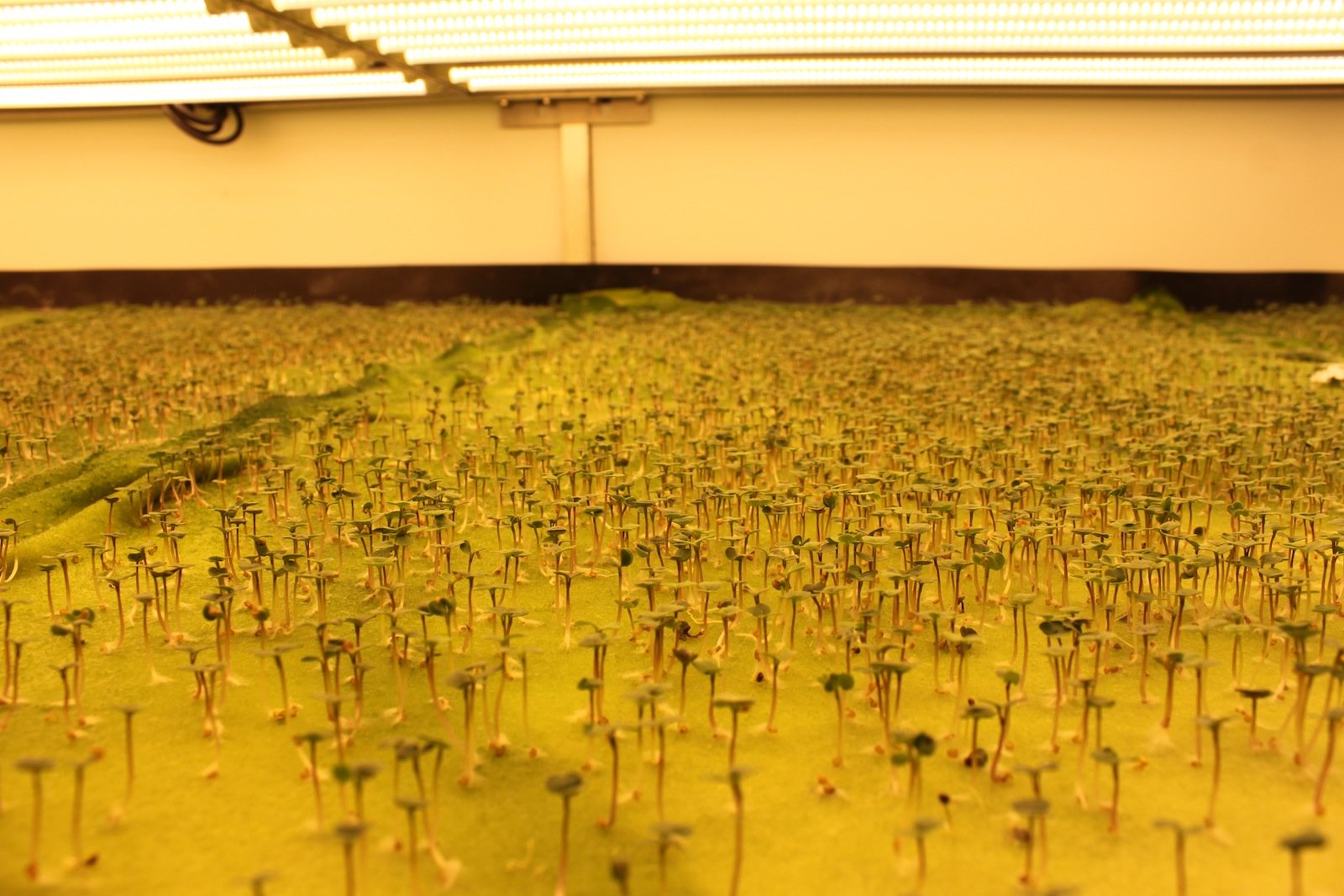
Fig. 1 Leanna Garfield, Tech Insider - Aerofarms
What kind of lighting is needed to get a fully developed, large, fragrant and tasty plant with moderate power consumption?
How to evaluate the energy efficiency of the lamp?
The main metrics for assessing the phytosvet energy efficiency are:
PPF always turns out to be slightly higher than YPF (the McCree curve is normalized to one and in the greater part of the range is less than one), therefore, it is advantageous to use the first metric for luminaires sellers. It is more profitable to use the second metric to customers, since it more adequately assesses energy efficiency.
Efficiency of DNaT
Large agricultural enterprises with vast experience who count money are still using sodium lamps. Yes, they willingly agree to hang over the ledges provided by them LED lamps, but do not agree to pay for them.
From pic. 2 shows that the efficiency of the sodium lamp is highly dependent on power and reaches a maximum at 600 watts. Characteristic optimistic value of YPFfor sodium lamp 600–1000 W is 1.5 eff. µmol / j. Sodium lamps 70–150 W have one and a half times less efficiency.
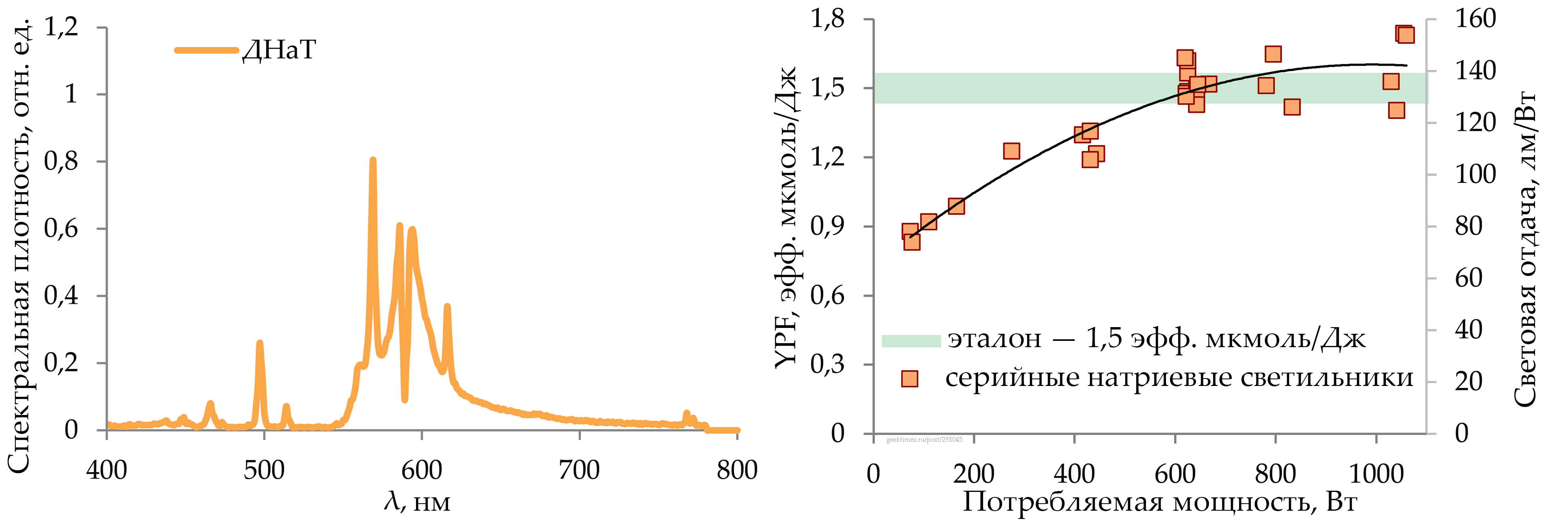
Fig. 2. Typical spectrum of sodium lamp for plants (left) . Efficiency in lumens per watt and in effective micromoles of serial sodium lamps for greenhouses of the Cavita , E-Papillon , Galad and Reflax types (right)
Any LED lamp having an efficiency of 1.5 eff. μmol / W and a reasonable price can be considered a worthy replacement for the sodium lamp.
Doubtful efficacy of red-and-blue phyto-illumination plants
In this article, we do not give the absorption spectra of chlorophyll because it is incorrect to refer to them in discussions on the use of light flux by a living plant. Chlorophyll invitro, highlighted and purified, really absorbs only red and blue light. In a living cell, pigments absorb light in the entire range of 400–700 nm and transfer its energy to chlorophyll. The energy efficiency of the light in the sheet is determined by the “ McCree 1972 ” curve (Fig. 3).

Fig. 3. V (λ) is the curve of visibility for a person; RQE — relative quantum efficiency for a plant ( McCree 1972); σ r and σ fr are the absorption curves of red and far red light by phytochrome; B (λ) - phototropic efficiency of blue light [3]
Note: the maximum efficiency in the red range is one and a half times higher than the minimum - in green. And if we average the efficiency over any wide band, the difference will become even less noticeable. In practice, the redistribution of part of the energy from the red range to the green energy function of light sometimes, on the contrary, enhances. Green light passes through the thickness of the leaves to the lower tiers, the effective leaf area of the plant increases dramatically, and the yield, for example, of lettuce rises [2].
Plant illumination with white LEDs The
energy feasibility of plant illumination with common white LED lamps was investigated in [3].
The characteristic shape of the white LED spectrum is determined by:
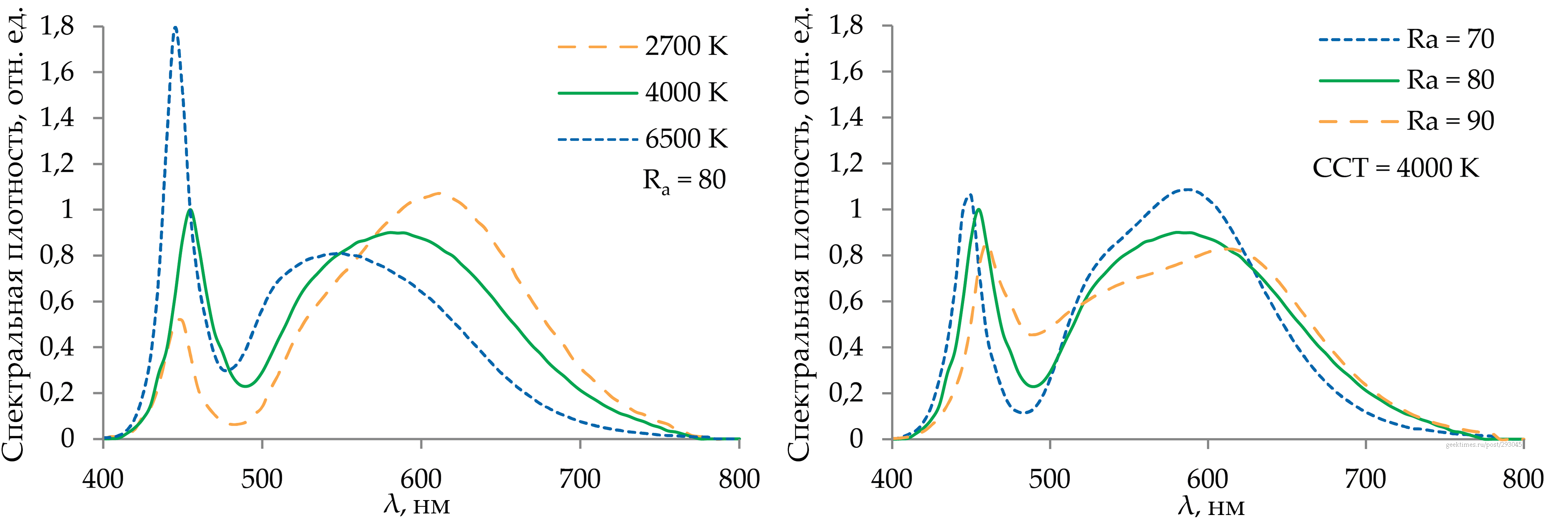
Fig. 4. Spectra of white LED light with one color rendition but different color temperature CCT (left) and one color temperature and different color rendition R a (right)
Differences in the spectrum of white diodes with one color and one color temperature are barely perceptible. Therefore, we can estimate the spectro-dependent parameters only by color temperature, color rendition and luminous efficiency - the parameters that are written in the usual white light lamp on the label.
The results of the analysis of the spectra of serial white LEDs are as follows:
1. In the spectrum of all white LEDs, even with a low color temperature and with maximum color rendition, as with sodium lamps, there is very little far red (Fig. 5).
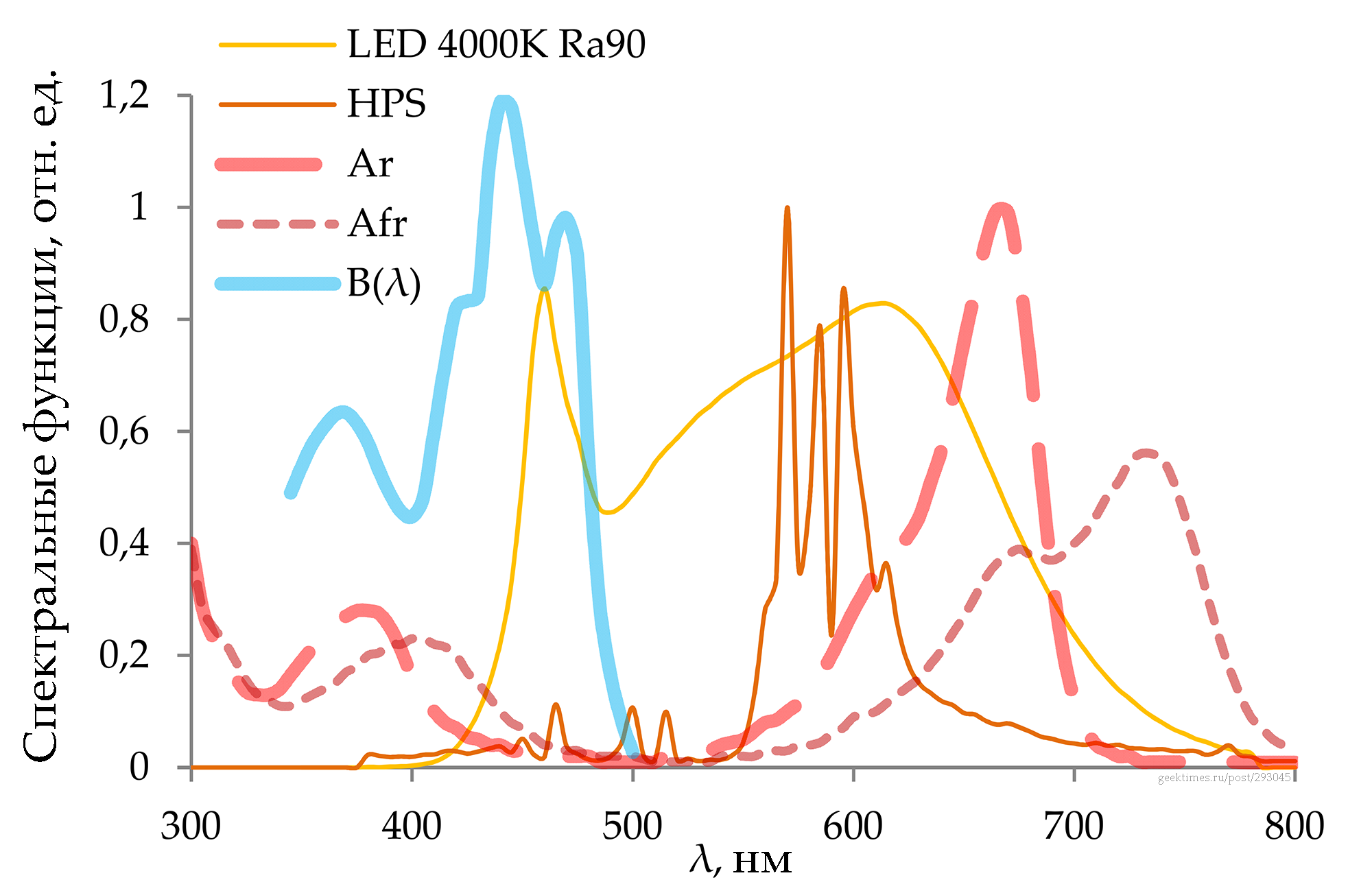
Fig. 5. Spectrum of white LED ( LED 4000 K R a = 90) and sodium light ( HPS ) compared to the spectral functions of plant susceptibility to blue ( B ), red ( A_r ) and high red light ( A_fr )
Under natural conditions, shaded by someone else's canopy foliage, the plant receives more far red than the neighbor, which in light-loving plants triggers the “shadow avoidance syndrome” - the plant stretches upwards. Tomatoes, for example, at the stage of growth (not seedlings!) Far red is needed to stretch out, increase growth and the total occupied area, and hence the harvest in the future.
Accordingly, under white LEDs and under sodium light, the plant feels like under the open sun and does not stretch upwards.
2. Blue light is needed for the “sun tracking” reaction (Fig. 6). Fig. 6. Phototropism - turning the leaves and flowers, pulling the stems onto the blue component of white light (picture from Wikipedia). In one watt the flow of white LED light of 2700 K phytoactive blue component is twice as large as in one watt of sodium light. Moreover, the proportion of phytoactive blue in white light increases in proportion to the color temperature. If it is necessary, for example, to turn ornamental flowers in the direction of people, they should be illuminated from this side with intense cold light, and the plants will unfold.
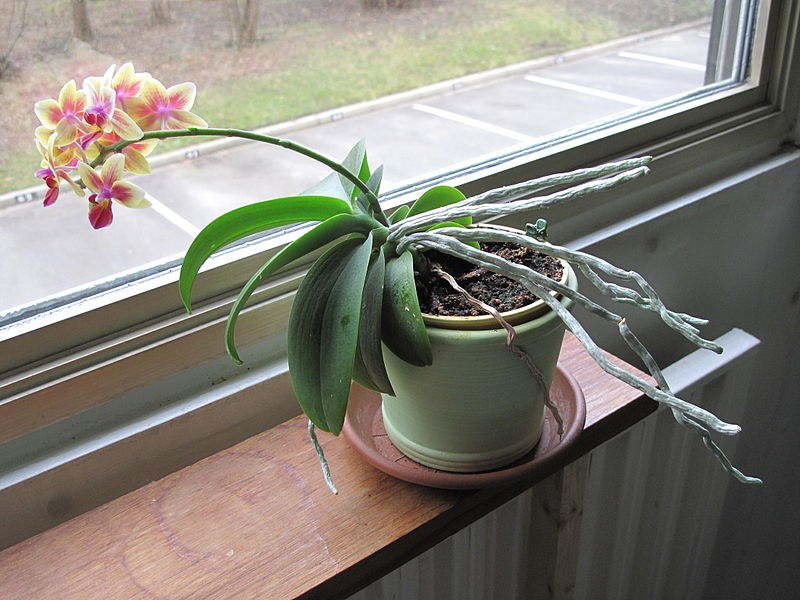
3. The energy value of light is determined by color temperature and color rendition and with an accuracy of 5% can be determined by the formula:
Where η - light return in lm / W,R a - total color rendering index,C C T is the correlated color temperature in Kelvin.
Examples of the use of this formula:
A. Estimate for the basic values of the parameters of white light, what should be the illumination in order to ensure, for example, 300 eff. μmol / s / m2:
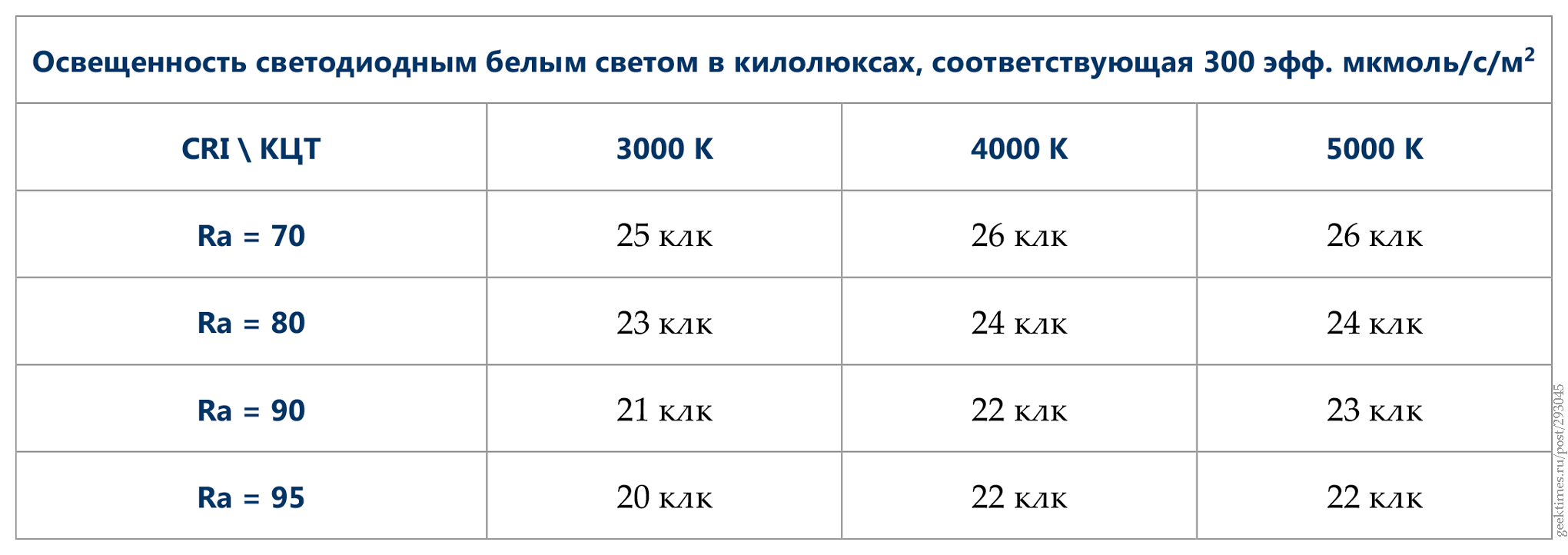
It is seen that the use of warm white light of high color rendering allows the use of slightly lower light levels. But if we consider that the light output of warm-light LEDs with high color rendition is slightly lower, it becomes clear that the choice of color temperature and color rendition cannot be energetically significant to win or lose. You can only adjust the proportion of phytoactive blue or red light.
B. Let us evaluate the applicability of a typical general-purpose LED luminaire for growing microgreen.
Let a lamp with a size of 0.6 × 0.6 m consume 35 W, a color temperature of 4000 K , a color rendering of Ra = 80 and a light return of 120 lm / W. Then its effectiveness will be YPF= (120/100) (1.15 + (35⋅80 - 2360) / 4000) eff. µmol / j = 1.5 eff. µmol / j. That, when multiplied by the consumed 35 watts will be 52.5 eff. µmol / s
If such a lamp is lowered low enough above the bed of a microgreen with an area of 0.6 × 0.6 m = 0.36 m 2 and thus avoiding the loss of light to the side, the illumination density will be 52.5 eff. μmol / s / 0.36m 2 = 145 eff. µmol / s / m 2 . This is about half the usual recommended values. Therefore, the power of the lamp must also be doubled.
Direct comparison of phytoparameters of different types of luminaires
Let us compare phytoparameters of a conventional office ceiling LED luminaire, produced in 2016, with specialized phytolamps (Fig. 7).
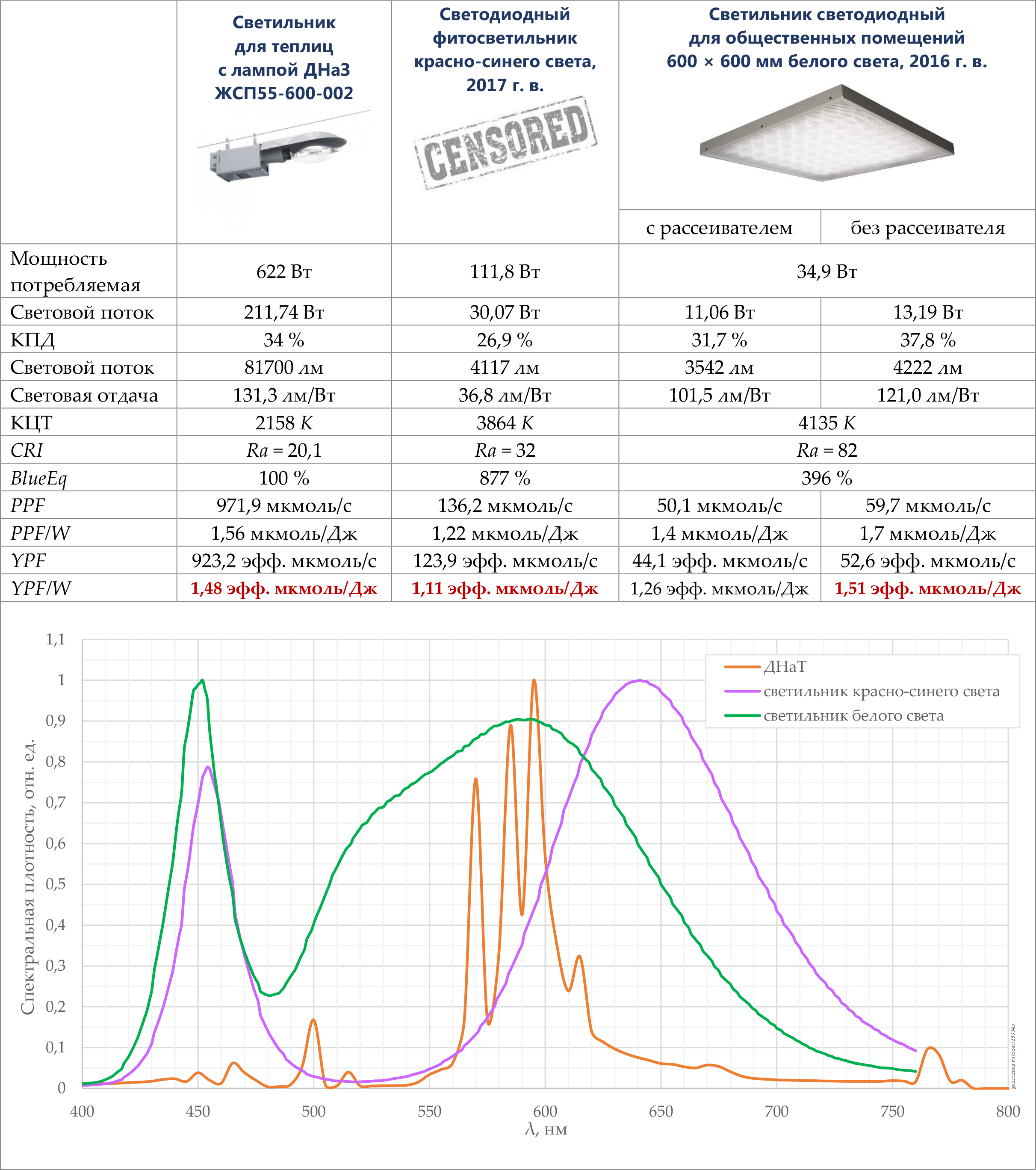
Fig. 7. Comparative parameters of a typical 600W sodium lamp for greenhouses, a specialized LED plant lighting and a lamp for general room lighting.
It can be seen that a conventional general lighting lamp with a diffuser removed when illuminating plants is not inferior in energy efficiency to a specialized sodium lamp. It is also seen that the phyto-illuminator of red-blue light (the manufacturer is intentionally not named) is made at a lower technological level, since its total efficiency (the ratio of the luminous flux in watts to the power consumed from the network) is inferior to the efficiency of an office lamp. But if the efficiency of red-blue and white lamps were the same, then the phytoparameters would also be about the same!
Also from the spectra it can be seen that the red-blue phyto-lamp is not narrowband, its red hump is wide and contains much more far red than the white LED and sodium light. In cases where far red is necessary, the use of such a luminaire as a sole or in combination with other options may be appropriate.
Evaluation of the energy efficiency of the lighting system as a whole:
The author uses a UPRtek 350N hand-held spectrometer (Fig. 8) provided by Intech Engineering.
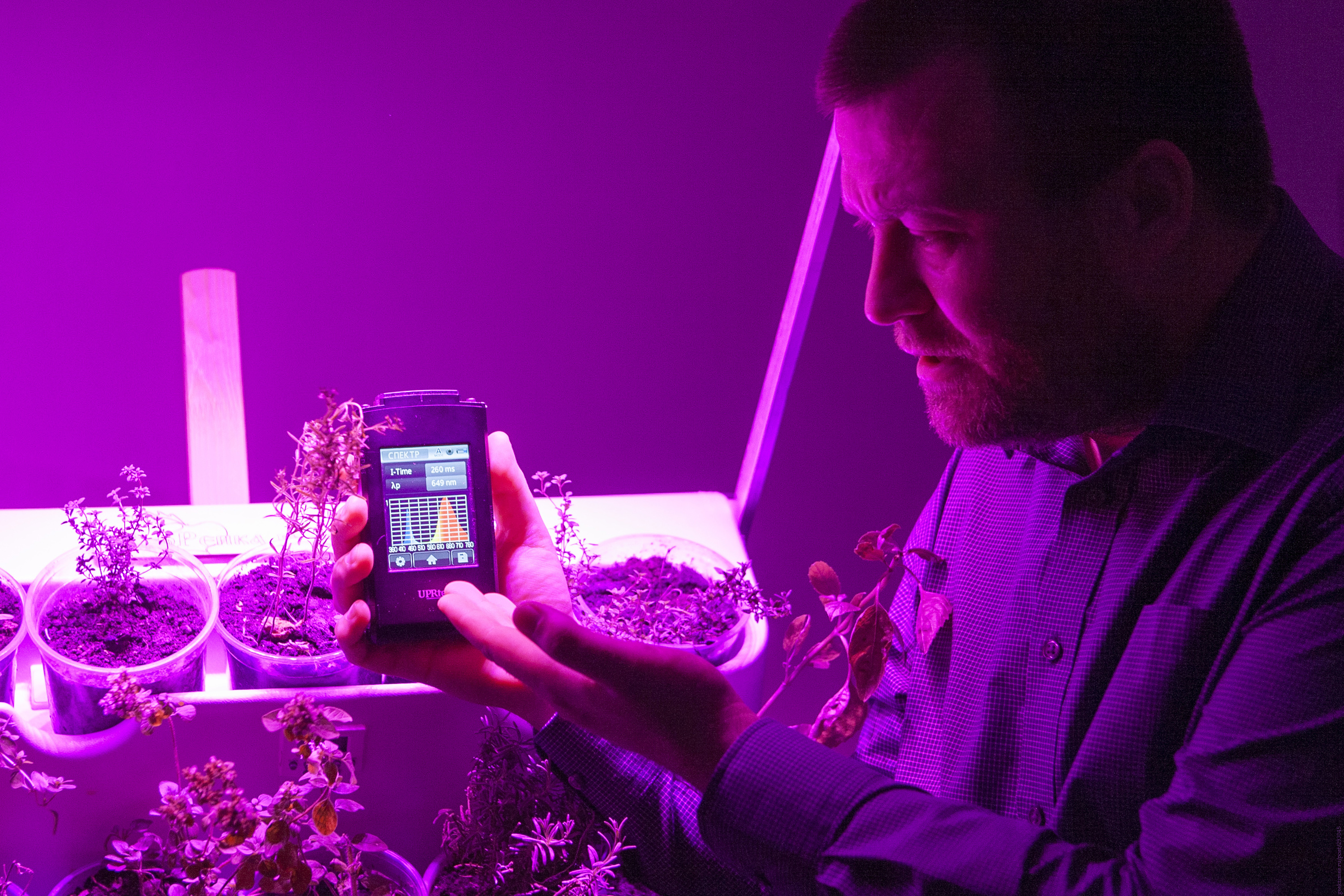
Fig. 8. Audit of phyto-lighting system The
following model UPRtek - spectrometer PG100Naccording to the manufacturer, it measures micromoles per square meter, and, more importantly, the luminous flux in watts per square meter.
Measuring luminous flux in watts is an excellent feature! If you multiply the illuminated area by the density of the light flux in watts and compare with the consumption of the lamp, the energy efficiency of the lighting system will become clear. And this is currently the only indisputable criterion of efficiency, in practice, for different lighting systems, it differs by an order of magnitude (and not by several times, or even by percents, as the energy effect changes when the shape of the spectrum changes).
Examples of the use of white light
Examples of illumination of hydroponic farms with red-blue and white light are described (Fig. 9).
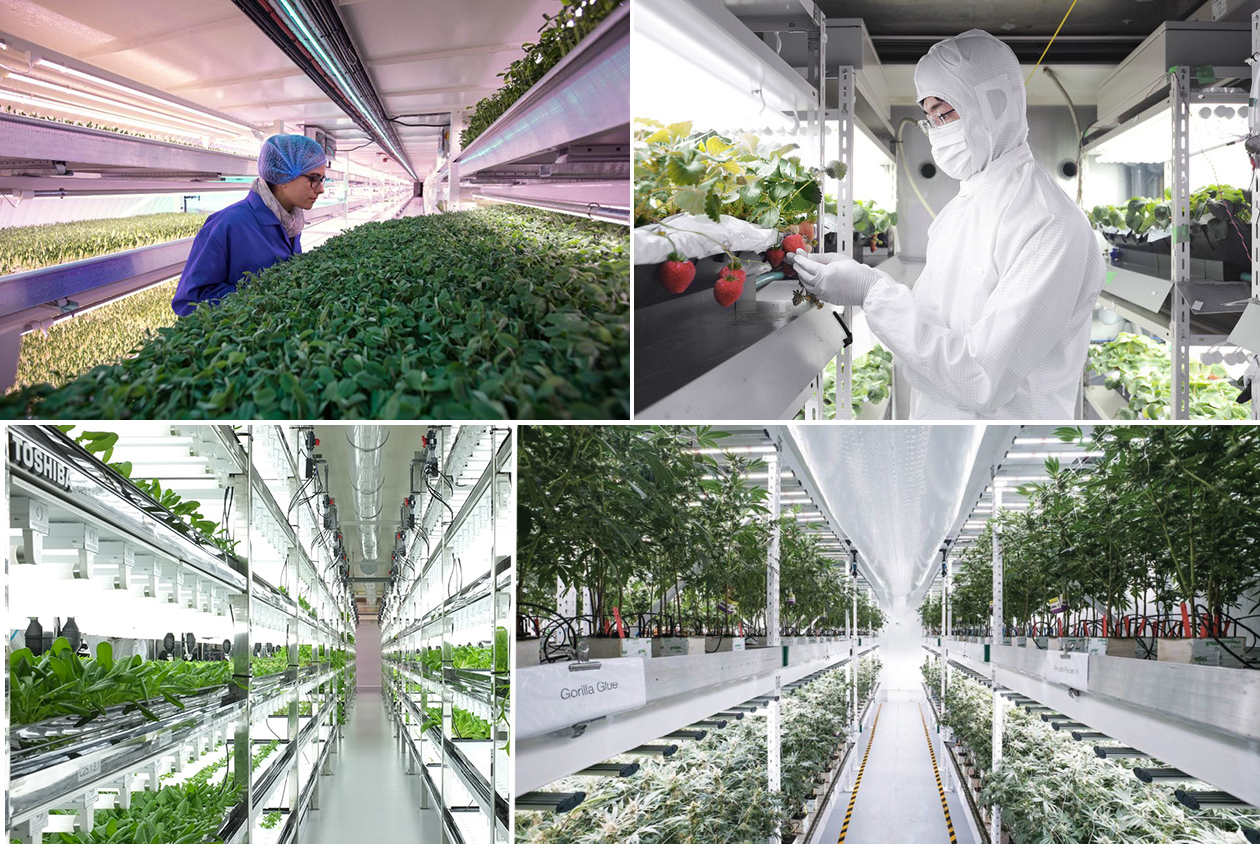
Fig. 9. From left to right and top to bottom farms: Fujitsu , Sharp , Toshiba , a farm for growing medicinal plants in Southern California. The
system of farms Aerofarms (Fig. 1, 10), the largest of which is built near New York, is fairly well known . Under the white LED lamps in Aerofarms grow more than 250 types of greenery, shooting over twenty harvests per year.

Fig. 10. Aerofarms Farm in New Jersey ("State of the Gardens") on the border with New York
Direct experiments comparing white and red-blue LED lighting
There are very few published results of direct experiments comparing plants grown under white and red-blue LEDs. . For example, a glimpse of such a result showed the Moscow Agricultural Academy. Timiryazev (Fig. 11).

Fig. 11. In each pair, the plant on the left is grown under white LEDs, on the right - under red-blue (from the presentation by I. G. Tarakanov, Department of Plant Physiology, Timiryazev Moscow Agricultural Academy)
Beijing University of Aviation and Cosmonautics in 2014 published the results of a large study of wheat grown under LEDs of different types [4]. Chinese researchers have concluded that it is advisable to use a mixture of white and red light. But if you look at the digital data from the article (Fig. 12), you notice that the difference in parameters with different types of lighting is not at all radical.
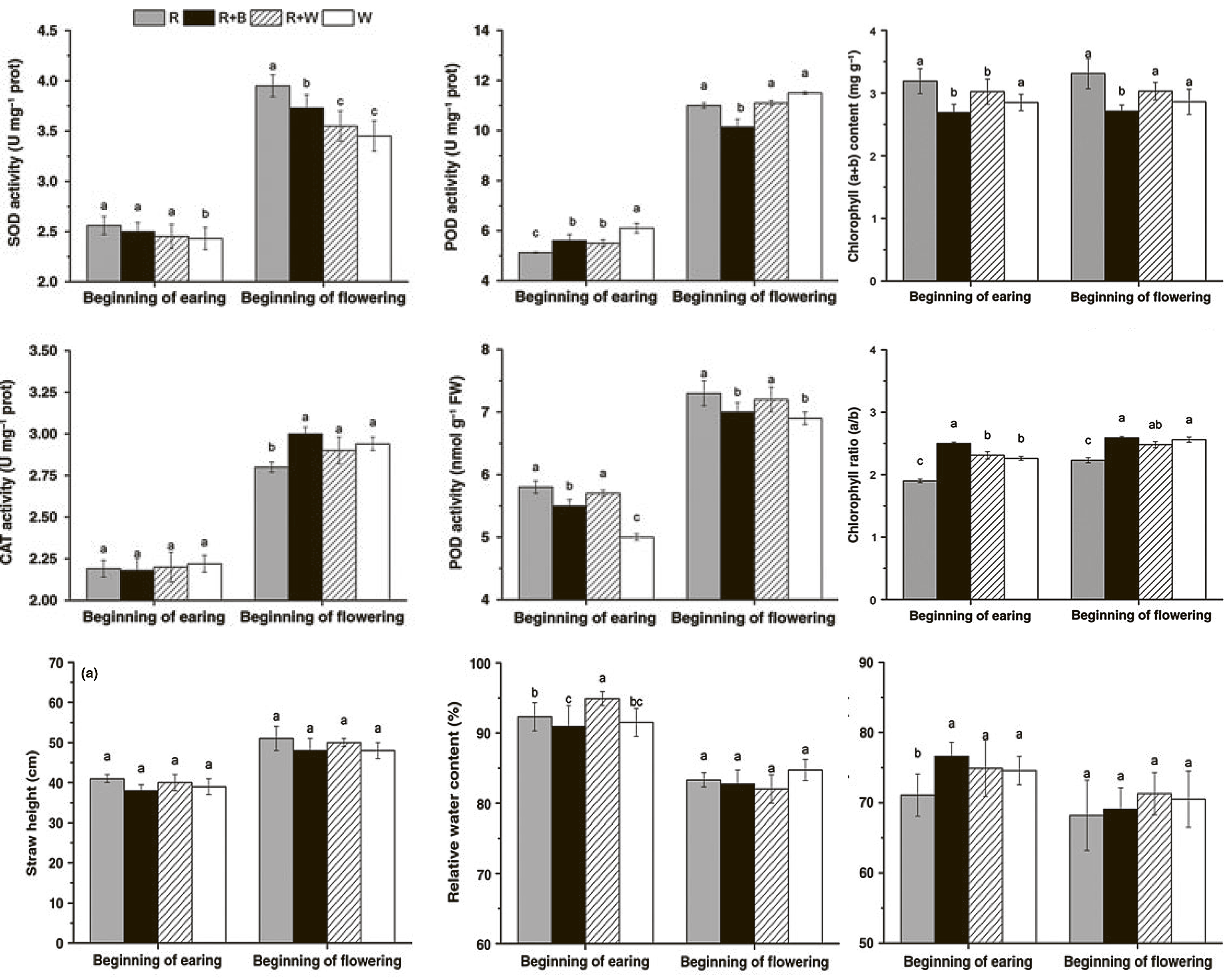
Figure 12. The values of the studied factors in the two phases of wheat growth under red, red-blue, red-white and white LEDs
However, the main focus of research today is to correct the disadvantages of narrow-band red-blue lighting by adding white light. For example, Japanese researchers [5, 6] found an increase in the mass and nutritional value of lettuce and tomatoes when white is added to red light. In practice, this means that if the aesthetic appeal of the plant during growth is unimportant, it is not necessary to discard already purchased narrow-band red-blue lamps, white light lamps can be used additionally.
The effect of light quality on the result
The fundamental law of ecology “Liebig's barrel” (Fig. 13) states: development limits the factor that deviates from the norm more than others. For example, if water, minerals and CO 2 are fully provided , but the illumination intensity is 30% of the optimal value, the plant will give no more than 30% of the maximum possible yield.

Fig. 13. Illustration of the limiting factor principle from a YouTube training video
The reaction of a plant to light: the intensity of gas exchange, the consumption of nutrients from the solution and the synthesis processes - is determined by laboratory methods. The responses characterize not only photosynthesis, but also the processes of growth, flowering, synthesis of substances necessary for taste and aroma.
In fig. 14 shows the response of a plant to a change in the wavelength of light. Measured the intensity of consumption of sodium and phosphorus from the nutrient solution of mint, strawberries and lettuce. Peaks on such graphs are signs of stimulation of a specific chemical reaction. The graphs show that to exclude any ranges from the full spectrum for the sake of saving - it's like removing a part of the piano keys and playing the melody on the remaining ones.
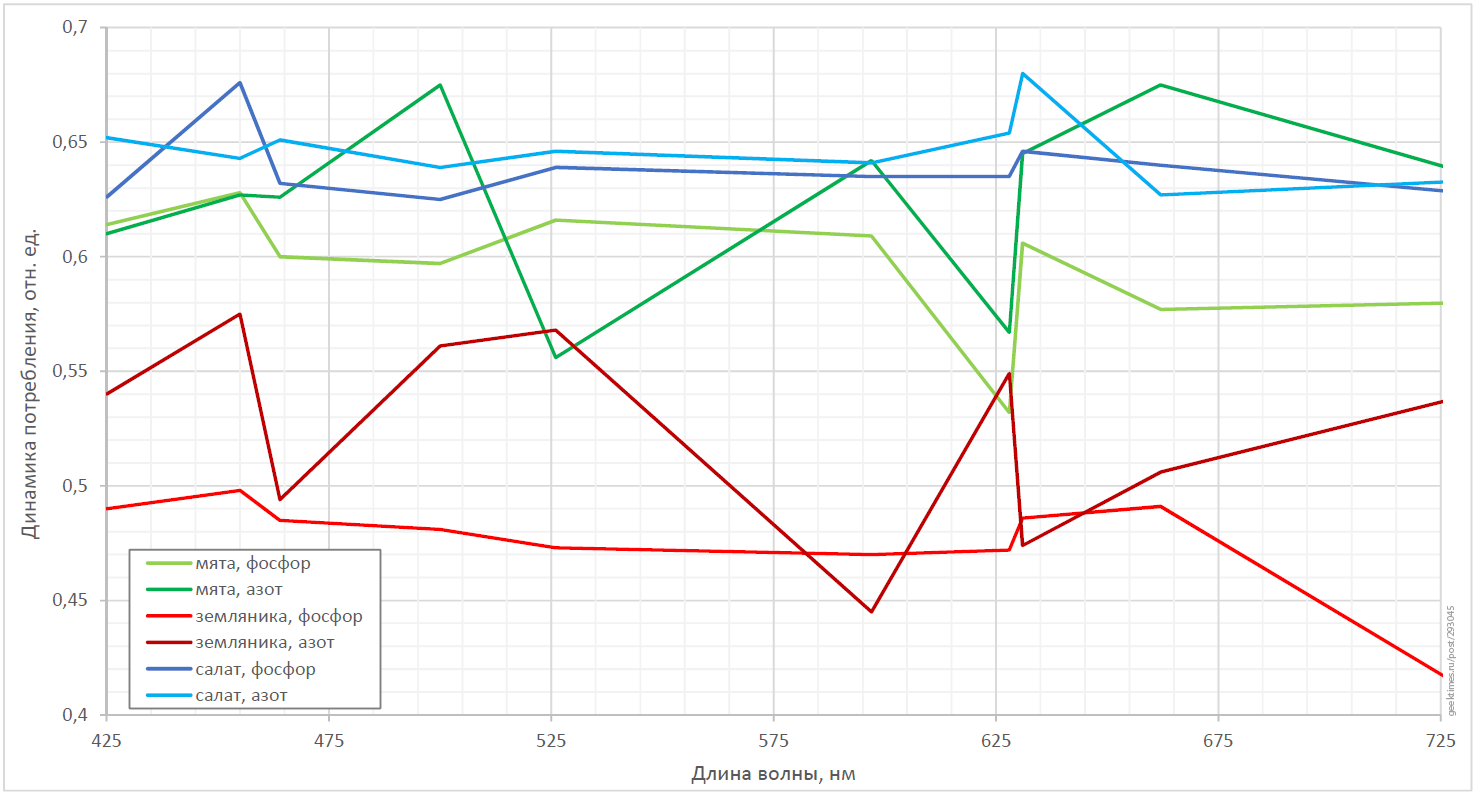
Fig. 14. The stimulating role of light for the consumption of nitrogen and phosphorus by mint, strawberries and lettuce (data provided by Fitex)
The limiting factor principle can be extended to individual spectral components - for a full result, in any case, a full spectrum is needed. Taking a certain range out of the full spectrum does not lead to a significant increase in energy efficiency, but a "Liebig barrel" may work - and the result will be negative.
The examples demonstrate that ordinary white LED light and specialized “red-blue phytosvet”, when illuminated by plants, have approximately the same energy efficiency. But broadband white complexly satisfies the needs of the plant, which are expressed not only in the stimulation of photosynthesis.
Removing green from a continuous spectrum so that light from white turns into purple is a marketing move for buyers who want a “special solution” but do not act as qualified customers.
White light correction
The most common white general-purpose LEDs have a low color rendering of Ra = 80, which is primarily due to the lack of red color (Fig. 4).
The lack of red in the spectrum can be replenished by adding red LEDs to the lamp. Such a solution promotes, for example , CREE . The logic of "Liebig's barrel" suggests that such an additive would not hurt if it is really an additive, and not a redistribution of energy from other ranges in favor of red.
An interesting and important work was done by the IMBP RAS in 2013–2016 [7, 8, 9]: they investigated how the light of white 4K LEDs 660 nm to the light of white LEDs 4000 K / Ra = 70 affects the development of Chinese cabbage .
And found out the following:
Thus, adding red to white is advisable in the particular case of Chinese cabbage and is quite possible in the general case. Of course, with biochemical control and proper selection of fertilizers for a particular crop.
Variants of enriching the spectrum with red light
The plant does not know where the quantum came from it from the spectrum of white light, and from where - the “red” quantum. There is no need to make a special spectrum in one LED. And there is no need to shine with red and white light from one of a special phytolamp. It is enough to use white light of general purpose and a separate red light to illuminate the plant additionally. And when there is a person next to the plant, the red lamp can be turned off by the motion sensor to make the plant look green and pretty.
But the reverse decision is also justified - by picking up the composition of the phosphor, expand the spectrum of the white LED's emission towards the long waves, balancing it so that the light remains white. And get the white light extravagant color, suitable for both plants and humans.
Open questions
You can identify the role of the ratio of far and near red light and the feasibility of using the "shadow avoidance syndrome" for different cultures. It is possible to argue on which areas during the analysis it is advisable to break the wavelength scale.
One can discuss whether a plant is needed for stimulation or a regulatory function of wavelengths shorter than 400 nm or longer than 700 nm. For example, there is a private message that ultraviolet significantly affects the consumer qualities of plants. Among other things, red-leaved varieties of lettuce are grown without ultraviolet radiation, and they grow green, but they are irradiated with ultraviolet before sale, they turn red and go to the counter. And is the new metric of PBAR ( plant biologically active radiation ), described in ANSI / ASABE S640 , Quantities and Units of Electromagnetic Radiation for Plants (Photosynthetic Organisms , prescribes to take into account the range of 280-800nm) correctly?
Conclusion
Chain stores choose more old-fashioned varieties, and then the buyer votes with a ruble for brighter fruits. And almost no one chooses the taste and aroma. But as soon as we become richer and begin to demand more, science will instantly give the right varieties and recipes for the nutrient solution.
And for the plant to synthesize everything that is needed for taste and aroma, lighting with a spectrum containing all the wavelengths to which the plant reacts, i.e. in the general case, a continuous spectrum, will be required. Perhaps the basic solution will be white light with high color rendering.
Acknowledgments
The author is sincerely grateful for the help in preparing the article for the staff member of the State Research Center of the Russian Federation-IMBP RAS. B. n Irina Konovalova; Tatyana Trishina, head of the Fiteks project; CREE specialist Mikhail Chervinsky

Fig. 1 Leanna Garfield, Tech Insider - Aerofarms
What kind of lighting is needed to get a fully developed, large, fragrant and tasty plant with moderate power consumption?
How to evaluate the energy efficiency of the lamp?
The main metrics for assessing the phytosvet energy efficiency are:
- Photosynthetic Photon Flux ( PPF ), in micromoles per joule, that is, among the quanta of light in the range 400–700 nm, which the lamp emitted, which consumed 1 J of electric power.
- Yield Photon Flux ( YPF ), in effective micromoles per Joule, that is, in the number of quanta per 1 J of electric power, taking into account the multiplier, the McCree curve .
PPF always turns out to be slightly higher than YPF (the McCree curve is normalized to one and in the greater part of the range is less than one), therefore, it is advantageous to use the first metric for luminaires sellers. It is more profitable to use the second metric to customers, since it more adequately assesses energy efficiency.
Efficiency of DNaT
Large agricultural enterprises with vast experience who count money are still using sodium lamps. Yes, they willingly agree to hang over the ledges provided by them LED lamps, but do not agree to pay for them.
From pic. 2 shows that the efficiency of the sodium lamp is highly dependent on power and reaches a maximum at 600 watts. Characteristic optimistic value of YPFfor sodium lamp 600–1000 W is 1.5 eff. µmol / j. Sodium lamps 70–150 W have one and a half times less efficiency.

Fig. 2. Typical spectrum of sodium lamp for plants (left) . Efficiency in lumens per watt and in effective micromoles of serial sodium lamps for greenhouses of the Cavita , E-Papillon , Galad and Reflax types (right)
Any LED lamp having an efficiency of 1.5 eff. μmol / W and a reasonable price can be considered a worthy replacement for the sodium lamp.
Doubtful efficacy of red-and-blue phyto-illumination plants
In this article, we do not give the absorption spectra of chlorophyll because it is incorrect to refer to them in discussions on the use of light flux by a living plant. Chlorophyll invitro, highlighted and purified, really absorbs only red and blue light. In a living cell, pigments absorb light in the entire range of 400–700 nm and transfer its energy to chlorophyll. The energy efficiency of the light in the sheet is determined by the “ McCree 1972 ” curve (Fig. 3).

Fig. 3. V (λ) is the curve of visibility for a person; RQE — relative quantum efficiency for a plant ( McCree 1972); σ r and σ fr are the absorption curves of red and far red light by phytochrome; B (λ) - phototropic efficiency of blue light [3]
Note: the maximum efficiency in the red range is one and a half times higher than the minimum - in green. And if we average the efficiency over any wide band, the difference will become even less noticeable. In practice, the redistribution of part of the energy from the red range to the green energy function of light sometimes, on the contrary, enhances. Green light passes through the thickness of the leaves to the lower tiers, the effective leaf area of the plant increases dramatically, and the yield, for example, of lettuce rises [2].
Plant illumination with white LEDs The
energy feasibility of plant illumination with common white LED lamps was investigated in [3].
The characteristic shape of the white LED spectrum is determined by:
- the balance of short and long waves, correlated with color temperature (Fig. 4, left);
- the degree of fullness of the spectrum that correlates with color rendition (Fig. 4, right).

Fig. 4. Spectra of white LED light with one color rendition but different color temperature CCT (left) and one color temperature and different color rendition R a (right)
Differences in the spectrum of white diodes with one color and one color temperature are barely perceptible. Therefore, we can estimate the spectro-dependent parameters only by color temperature, color rendition and luminous efficiency - the parameters that are written in the usual white light lamp on the label.
The results of the analysis of the spectra of serial white LEDs are as follows:
1. In the spectrum of all white LEDs, even with a low color temperature and with maximum color rendition, as with sodium lamps, there is very little far red (Fig. 5).

Fig. 5. Spectrum of white LED ( LED 4000 K R a = 90) and sodium light ( HPS ) compared to the spectral functions of plant susceptibility to blue ( B ), red ( A_r ) and high red light ( A_fr )
Under natural conditions, shaded by someone else's canopy foliage, the plant receives more far red than the neighbor, which in light-loving plants triggers the “shadow avoidance syndrome” - the plant stretches upwards. Tomatoes, for example, at the stage of growth (not seedlings!) Far red is needed to stretch out, increase growth and the total occupied area, and hence the harvest in the future.
Accordingly, under white LEDs and under sodium light, the plant feels like under the open sun and does not stretch upwards.
2. Blue light is needed for the “sun tracking” reaction (Fig. 6). Fig. 6. Phototropism - turning the leaves and flowers, pulling the stems onto the blue component of white light (picture from Wikipedia). In one watt the flow of white LED light of 2700 K phytoactive blue component is twice as large as in one watt of sodium light. Moreover, the proportion of phytoactive blue in white light increases in proportion to the color temperature. If it is necessary, for example, to turn ornamental flowers in the direction of people, they should be illuminated from this side with intense cold light, and the plants will unfold.

3. The energy value of light is determined by color temperature and color rendition and with an accuracy of 5% can be determined by the formula:
Y P F = η100 ⋅[1,15+35⋅Ra-2360The C the C T ]eff. mtomals/Dw,
Where η - light return in lm / W,R a - total color rendering index,C C T is the correlated color temperature in Kelvin.
Examples of the use of this formula:
A. Estimate for the basic values of the parameters of white light, what should be the illumination in order to ensure, for example, 300 eff. μmol / s / m2:

It is seen that the use of warm white light of high color rendering allows the use of slightly lower light levels. But if we consider that the light output of warm-light LEDs with high color rendition is slightly lower, it becomes clear that the choice of color temperature and color rendition cannot be energetically significant to win or lose. You can only adjust the proportion of phytoactive blue or red light.
B. Let us evaluate the applicability of a typical general-purpose LED luminaire for growing microgreen.
Let a lamp with a size of 0.6 × 0.6 m consume 35 W, a color temperature of 4000 K , a color rendering of Ra = 80 and a light return of 120 lm / W. Then its effectiveness will be YPF= (120/100) (1.15 + (35⋅80 - 2360) / 4000) eff. µmol / j = 1.5 eff. µmol / j. That, when multiplied by the consumed 35 watts will be 52.5 eff. µmol / s
If such a lamp is lowered low enough above the bed of a microgreen with an area of 0.6 × 0.6 m = 0.36 m 2 and thus avoiding the loss of light to the side, the illumination density will be 52.5 eff. μmol / s / 0.36m 2 = 145 eff. µmol / s / m 2 . This is about half the usual recommended values. Therefore, the power of the lamp must also be doubled.
Direct comparison of phytoparameters of different types of luminaires
Let us compare phytoparameters of a conventional office ceiling LED luminaire, produced in 2016, with specialized phytolamps (Fig. 7).

Fig. 7. Comparative parameters of a typical 600W sodium lamp for greenhouses, a specialized LED plant lighting and a lamp for general room lighting.
It can be seen that a conventional general lighting lamp with a diffuser removed when illuminating plants is not inferior in energy efficiency to a specialized sodium lamp. It is also seen that the phyto-illuminator of red-blue light (the manufacturer is intentionally not named) is made at a lower technological level, since its total efficiency (the ratio of the luminous flux in watts to the power consumed from the network) is inferior to the efficiency of an office lamp. But if the efficiency of red-blue and white lamps were the same, then the phytoparameters would also be about the same!
Also from the spectra it can be seen that the red-blue phyto-lamp is not narrowband, its red hump is wide and contains much more far red than the white LED and sodium light. In cases where far red is necessary, the use of such a luminaire as a sole or in combination with other options may be appropriate.
Evaluation of the energy efficiency of the lighting system as a whole:
The author uses a UPRtek 350N hand-held spectrometer (Fig. 8) provided by Intech Engineering.

Fig. 8. Audit of phyto-lighting system The
following model UPRtek - spectrometer PG100Naccording to the manufacturer, it measures micromoles per square meter, and, more importantly, the luminous flux in watts per square meter.
Measuring luminous flux in watts is an excellent feature! If you multiply the illuminated area by the density of the light flux in watts and compare with the consumption of the lamp, the energy efficiency of the lighting system will become clear. And this is currently the only indisputable criterion of efficiency, in practice, for different lighting systems, it differs by an order of magnitude (and not by several times, or even by percents, as the energy effect changes when the shape of the spectrum changes).
Examples of the use of white light
Examples of illumination of hydroponic farms with red-blue and white light are described (Fig. 9).

Fig. 9. From left to right and top to bottom farms: Fujitsu , Sharp , Toshiba , a farm for growing medicinal plants in Southern California. The
system of farms Aerofarms (Fig. 1, 10), the largest of which is built near New York, is fairly well known . Under the white LED lamps in Aerofarms grow more than 250 types of greenery, shooting over twenty harvests per year.

Fig. 10. Aerofarms Farm in New Jersey ("State of the Gardens") on the border with New York
Direct experiments comparing white and red-blue LED lighting
There are very few published results of direct experiments comparing plants grown under white and red-blue LEDs. . For example, a glimpse of such a result showed the Moscow Agricultural Academy. Timiryazev (Fig. 11).

Fig. 11. In each pair, the plant on the left is grown under white LEDs, on the right - under red-blue (from the presentation by I. G. Tarakanov, Department of Plant Physiology, Timiryazev Moscow Agricultural Academy)
Beijing University of Aviation and Cosmonautics in 2014 published the results of a large study of wheat grown under LEDs of different types [4]. Chinese researchers have concluded that it is advisable to use a mixture of white and red light. But if you look at the digital data from the article (Fig. 12), you notice that the difference in parameters with different types of lighting is not at all radical.

Figure 12. The values of the studied factors in the two phases of wheat growth under red, red-blue, red-white and white LEDs
However, the main focus of research today is to correct the disadvantages of narrow-band red-blue lighting by adding white light. For example, Japanese researchers [5, 6] found an increase in the mass and nutritional value of lettuce and tomatoes when white is added to red light. In practice, this means that if the aesthetic appeal of the plant during growth is unimportant, it is not necessary to discard already purchased narrow-band red-blue lamps, white light lamps can be used additionally.
The effect of light quality on the result
The fundamental law of ecology “Liebig's barrel” (Fig. 13) states: development limits the factor that deviates from the norm more than others. For example, if water, minerals and CO 2 are fully provided , but the illumination intensity is 30% of the optimal value, the plant will give no more than 30% of the maximum possible yield.

Fig. 13. Illustration of the limiting factor principle from a YouTube training video
The reaction of a plant to light: the intensity of gas exchange, the consumption of nutrients from the solution and the synthesis processes - is determined by laboratory methods. The responses characterize not only photosynthesis, but also the processes of growth, flowering, synthesis of substances necessary for taste and aroma.
In fig. 14 shows the response of a plant to a change in the wavelength of light. Measured the intensity of consumption of sodium and phosphorus from the nutrient solution of mint, strawberries and lettuce. Peaks on such graphs are signs of stimulation of a specific chemical reaction. The graphs show that to exclude any ranges from the full spectrum for the sake of saving - it's like removing a part of the piano keys and playing the melody on the remaining ones.

Fig. 14. The stimulating role of light for the consumption of nitrogen and phosphorus by mint, strawberries and lettuce (data provided by Fitex)
The limiting factor principle can be extended to individual spectral components - for a full result, in any case, a full spectrum is needed. Taking a certain range out of the full spectrum does not lead to a significant increase in energy efficiency, but a "Liebig barrel" may work - and the result will be negative.
The examples demonstrate that ordinary white LED light and specialized “red-blue phytosvet”, when illuminated by plants, have approximately the same energy efficiency. But broadband white complexly satisfies the needs of the plant, which are expressed not only in the stimulation of photosynthesis.
Removing green from a continuous spectrum so that light from white turns into purple is a marketing move for buyers who want a “special solution” but do not act as qualified customers.
White light correction
The most common white general-purpose LEDs have a low color rendering of Ra = 80, which is primarily due to the lack of red color (Fig. 4).
The lack of red in the spectrum can be replenished by adding red LEDs to the lamp. Such a solution promotes, for example , CREE . The logic of "Liebig's barrel" suggests that such an additive would not hurt if it is really an additive, and not a redistribution of energy from other ranges in favor of red.
An interesting and important work was done by the IMBP RAS in 2013–2016 [7, 8, 9]: they investigated how the light of white 4K LEDs 660 nm to the light of white LEDs 4000 K / Ra = 70 affects the development of Chinese cabbage .
And found out the following:
- Under LED light cabbage grows about the same as under sodium, but it has more chlorophyll (the leaves are greener).
- The dry weight of the crop is almost proportional to the total amount of light in moles produced by the plant. More light - more cabbage.
- The concentration of vitamin C in cabbage slightly increases with increasing illumination, but significantly increases with the addition of red light to the white light.
- A significant increase in the proportion of the red component in the spectrum significantly increased the concentration of nitrates in biomass. It was necessary to optimize the nutrient solution and introduce a portion of nitrogen in the ammonium form, so as not to go beyond the MPC for nitrates. But in pure white light it was possible to work only with the nitrate form.
- The increase in the share of red in the total light flux has almost no effect on the mass of the crop. That is, the completion of the missing spectral component does not affect the quantity of the crop, but its quality.
- Higher efficiency in moles per watt of a red LED leads to the fact that adding red to white is also more energy efficient.
Thus, adding red to white is advisable in the particular case of Chinese cabbage and is quite possible in the general case. Of course, with biochemical control and proper selection of fertilizers for a particular crop.
Variants of enriching the spectrum with red light
The plant does not know where the quantum came from it from the spectrum of white light, and from where - the “red” quantum. There is no need to make a special spectrum in one LED. And there is no need to shine with red and white light from one of a special phytolamp. It is enough to use white light of general purpose and a separate red light to illuminate the plant additionally. And when there is a person next to the plant, the red lamp can be turned off by the motion sensor to make the plant look green and pretty.
But the reverse decision is also justified - by picking up the composition of the phosphor, expand the spectrum of the white LED's emission towards the long waves, balancing it so that the light remains white. And get the white light extravagant color, suitable for both plants and humans.
Open questions
You can identify the role of the ratio of far and near red light and the feasibility of using the "shadow avoidance syndrome" for different cultures. It is possible to argue on which areas during the analysis it is advisable to break the wavelength scale.
One can discuss whether a plant is needed for stimulation or a regulatory function of wavelengths shorter than 400 nm or longer than 700 nm. For example, there is a private message that ultraviolet significantly affects the consumer qualities of plants. Among other things, red-leaved varieties of lettuce are grown without ultraviolet radiation, and they grow green, but they are irradiated with ultraviolet before sale, they turn red and go to the counter. And is the new metric of PBAR ( plant biologically active radiation ), described in ANSI / ASABE S640 , Quantities and Units of Electromagnetic Radiation for Plants (Photosynthetic Organisms , prescribes to take into account the range of 280-800nm) correctly?
Conclusion
Chain stores choose more old-fashioned varieties, and then the buyer votes with a ruble for brighter fruits. And almost no one chooses the taste and aroma. But as soon as we become richer and begin to demand more, science will instantly give the right varieties and recipes for the nutrient solution.
And for the plant to synthesize everything that is needed for taste and aroma, lighting with a spectrum containing all the wavelengths to which the plant reacts, i.e. in the general case, a continuous spectrum, will be required. Perhaps the basic solution will be white light with high color rendering.
Acknowledgments
The author is sincerely grateful for the help in preparing the article for the staff member of the State Research Center of the Russian Federation-IMBP RAS. B. n Irina Konovalova; Tatyana Trishina, head of the Fiteks project; CREE specialist Mikhail Chervinsky
Literature
Литература
1. Son K-H, Oh M-M. Leaf shape, growth, and antioxidant phenolic compounds of two lettuce cultivars grown under various combinations of blue and red light-emitting diodes // Hortscience. – 2013. – Vol. 48. – P. 988-95.
2. Ptushenko V.V., Avercheva O.V., Bassarskaya E.M., Berkovich Yu A., Erokhin A.N., Smolyanina S.O., Zhigalova T.V., 2015. Possible reasons of a decline in growth of Chinese cabbage under acombined narrowband red and blue light in comparison withillumination by high-pressure sodium lamp. Scientia Horticulturae https://doi.org/10.1016/j.scienta.2015.08.021
3. Sharakshane A., 2017, Whole high-quality light environment for humans and plants. https://doi.org/10.1016/j.lssr.2017.07.001
4. C. Dong, Y. Fu, G. Liu & H. Liu, 2014, Growth, Photosynthetic Characteristics, Antioxidant Capacity and Biomass Yield and Quality of Wheat (Triticum aestivum L.) Exposed to LED Light Sources with Different Spectra Combinations
5. Lin K.H., Huang M.Y., Huang W.D. et al. The effects of red, blue, and white light-emitting diodes on the growth, development, and edible quality of hydroponically grown lettuce (Lactuca sativa L. var. capitata) // Scientia Horticulturae. – 2013. – V. 150. – P. 86–91.
6. Lu, N., Maruo T., Johkan M., et al. Effects of supplemental lighting with light-emitting diodes (LEDs) on tomato yield and quality of single-truss tomato plants grown at high planting density // Environ. Control. Biol. – 2012. Vol. 50. – P. 63–74.
7. Коновалова И.О., Беркович Ю.А., Ерохин А.Н., Смолянина С.О., О.С. Яковлева, А.И. Знаменский, И.Г. Тараканов, С.Г. Радченко, С.Н. Лапач. Обоснование оптимальных режимов освещения растений для космической оранжереи «Витацикл-Т». Авиакосмическая и экологическая медицина. 2016. Т. 50. № 4.
8. Коновалова И.О., Беркович Ю.А., Ерохин А.Н., Смолянина С.О., Яковлева О.С., Знаменский А.И., Тараканов И.Г., Радченко С.Г., Лапач С.Н., Трофимов Ю.В., Цвирко В.И. Оптимизация светодиодной системы освещения витаминной космической оранжереи. Авиакосмическая и экологическая медицина. 2016. Т. 50. № 3.
9. Коновалова И.О., Беркович Ю.А., Смолянина С.О., Помелова М.А., Ерохин А.Н., Яковлева О.С., Тараканов И.Г. Влияние параметров светового режима на накопление нитратов в надземной биомассе капусты китайской (Brassica chinensis L.) при выращивании со светодиодными облучателями. Агрохимия. 2015. № 11.
1. Son K-H, Oh M-M. Leaf shape, growth, and antioxidant phenolic compounds of two lettuce cultivars grown under various combinations of blue and red light-emitting diodes // Hortscience. – 2013. – Vol. 48. – P. 988-95.
2. Ptushenko V.V., Avercheva O.V., Bassarskaya E.M., Berkovich Yu A., Erokhin A.N., Smolyanina S.O., Zhigalova T.V., 2015. Possible reasons of a decline in growth of Chinese cabbage under acombined narrowband red and blue light in comparison withillumination by high-pressure sodium lamp. Scientia Horticulturae https://doi.org/10.1016/j.scienta.2015.08.021
3. Sharakshane A., 2017, Whole high-quality light environment for humans and plants. https://doi.org/10.1016/j.lssr.2017.07.001
4. C. Dong, Y. Fu, G. Liu & H. Liu, 2014, Growth, Photosynthetic Characteristics, Antioxidant Capacity and Biomass Yield and Quality of Wheat (Triticum aestivum L.) Exposed to LED Light Sources with Different Spectra Combinations
5. Lin K.H., Huang M.Y., Huang W.D. et al. The effects of red, blue, and white light-emitting diodes on the growth, development, and edible quality of hydroponically grown lettuce (Lactuca sativa L. var. capitata) // Scientia Horticulturae. – 2013. – V. 150. – P. 86–91.
6. Lu, N., Maruo T., Johkan M., et al. Effects of supplemental lighting with light-emitting diodes (LEDs) on tomato yield and quality of single-truss tomato plants grown at high planting density // Environ. Control. Biol. – 2012. Vol. 50. – P. 63–74.
7. Коновалова И.О., Беркович Ю.А., Ерохин А.Н., Смолянина С.О., О.С. Яковлева, А.И. Знаменский, И.Г. Тараканов, С.Г. Радченко, С.Н. Лапач. Обоснование оптимальных режимов освещения растений для космической оранжереи «Витацикл-Т». Авиакосмическая и экологическая медицина. 2016. Т. 50. № 4.
8. Коновалова И.О., Беркович Ю.А., Ерохин А.Н., Смолянина С.О., Яковлева О.С., Знаменский А.И., Тараканов И.Г., Радченко С.Г., Лапач С.Н., Трофимов Ю.В., Цвирко В.И. Оптимизация светодиодной системы освещения витаминной космической оранжереи. Авиакосмическая и экологическая медицина. 2016. Т. 50. № 3.
9. Коновалова И.О., Беркович Ю.А., Смолянина С.О., Помелова М.А., Ерохин А.Н., Яковлева О.С., Тараканов И.Г. Влияние параметров светового режима на накопление нитратов в надземной биомассе капусты китайской (Brassica chinensis L.) при выращивании со светодиодными облучателями. Агрохимия. 2015. № 11.
Note1: This post is a translation of the White LED Lighting for Plants article . Note2
: The following cycle article: Estimate PPFD when the plant is illuminated with white LEDs simply: 1000 lux = 15 μmol / s / m2
